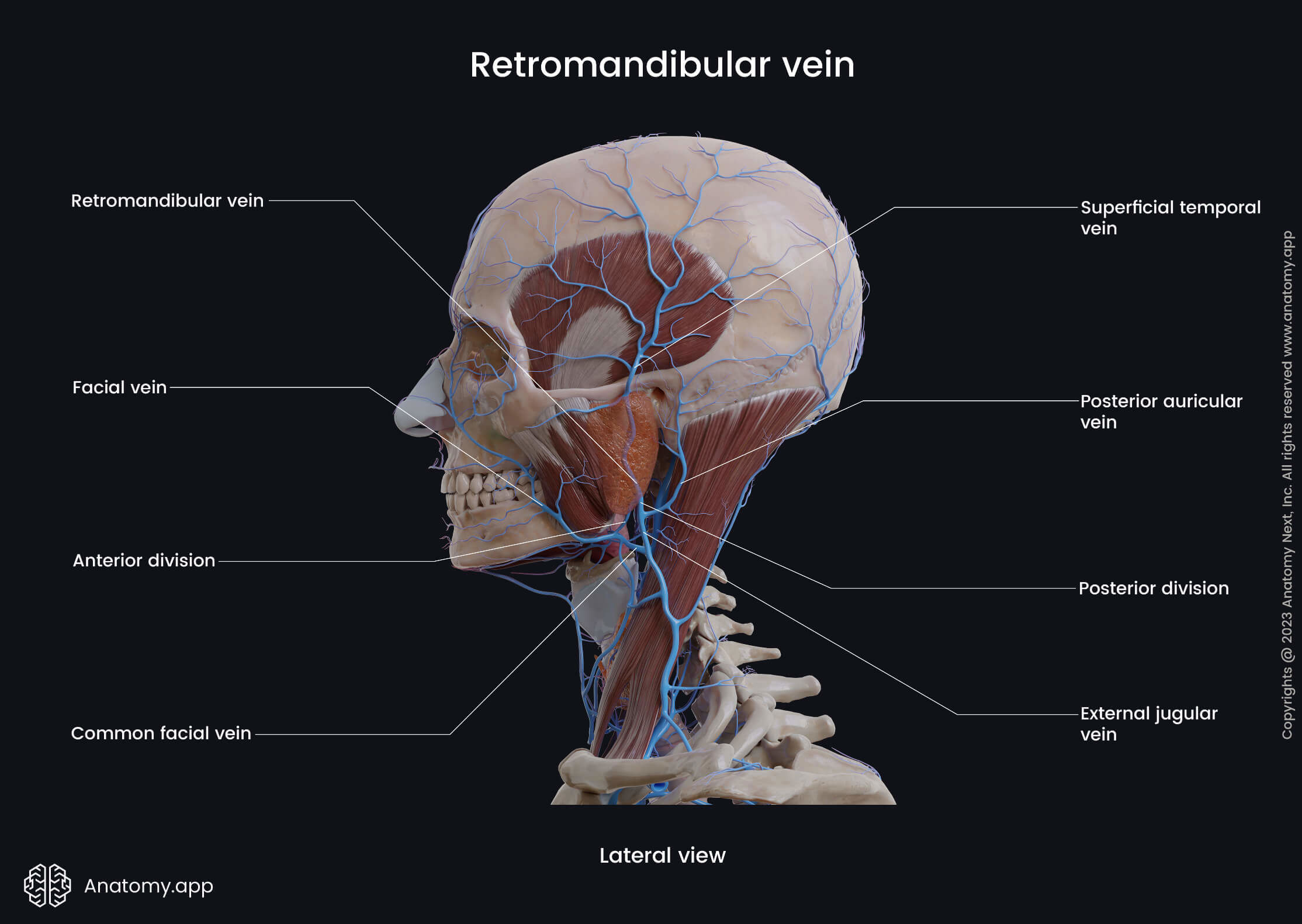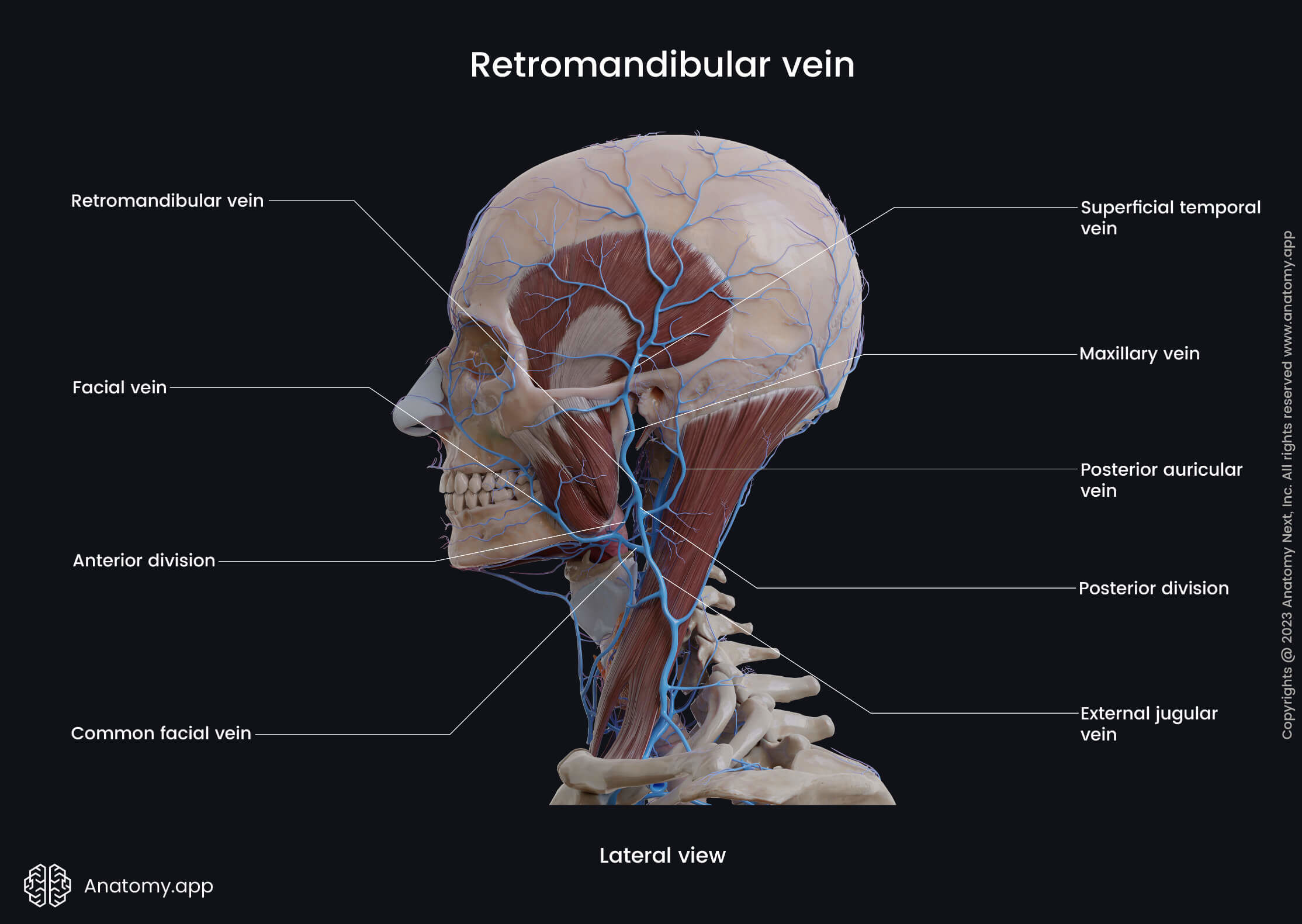- Anatomical terminology
- Skeletal system
- Joints
- Muscles
- Heart
- Blood vessels
- Blood vessels of systemic circulation
- Aorta
- Blood vessels of head and neck
- Arteries of head and neck
- Veins of head and neck
- Veins of head
- Extracranial veins
- Intracranial veins
- Veins of neck
- Veins of head
- Blood vessels of upper limb
- Blood vessels of thorax
- Blood vessels of abdomen
- Blood vessels of pelvis and lower limb
- Blood vessels of systemic circulation
- Lymphatic system
- Nervous system
- Respiratory system
- Digestive system
- Urinary system
- Female reproductive system
- Male reproductive system
- Endocrine glands
- Eye
- Ear
Retromandibular vein
The retromandibular vein, also called the posterior facial vein, is formed by the union of the superficial temporal and maxillary veins. It usually happens within the tissue of the parotid gland at its superior aspect. The vein travels behind the ramus of the mandible, going between it and the sternocleidomastoid muscle.
The retromandibular vein descends within the substance of the parotid gland, positioned superficial to the external carotid artery and deep to the facial nerve (CN VII).
At the lower pole of the parotid gland, the retromandibular vein divides into two divisions - anterior and posterior.
- The anterior division passes forward and anteroinferior to the angle of the mandible unites with the facial vein, forming the common facial vein.
- The posterior division joins with the posterior auricular vein within or near the posterior aspect of the apex of the parotid gland, forming the external jugular vein.


Overall, the retromandibular vein collects deoxygenated blood from the jaw region and parotid gland.